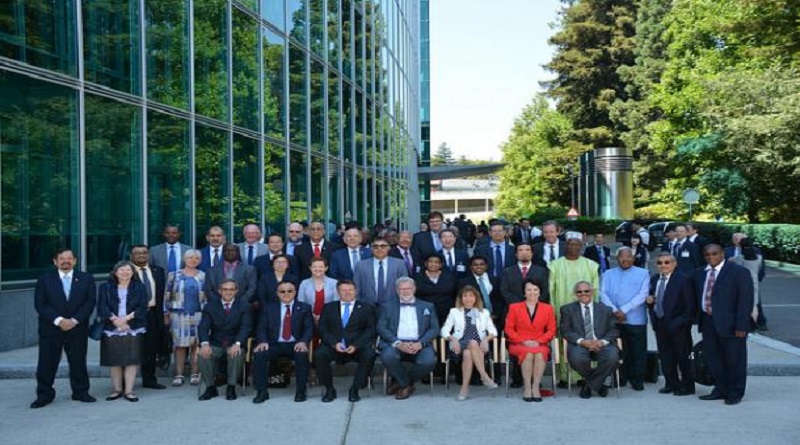WMO Council approves new strategic plan to meet challenges
A new Strategic Plan to guide the future direction of the World Meteorological Organization has been approved by its Executive Council, aiming at a more integrated Earth system approach to meet the inter-connected challenges of the 21st century.
“By 2030, we see a world where all nations, especially the most vulnerable, are more resilient to the socioeconomic consequences of extreme weather, climate, water and other environmental events; and underpin their sustainable development through the best possible services, whether over land, at sea or in the air,” it says.
In addition to the long-term vision, it sets out long term goals and strategic objectives with specific focus for 2020-2023. These are in support of the international agenda on sustainable development, disaster risk reduction and climate change and the unprecedented demand for actionable, accessible and authoritative science-based information.
The strategic plan was driven by the need for an integrated approach to address increasing threats of extreme weather and climate, freshwater and ocean stress, air quality and environmental degradation. Science needs to be transformed into services to strengthen resilience, mitigation and adaptation.
“High-impact weather, water and climate extremes have devastating consequences for the safety of people, national economies, urban and rural environments, and food and water security. Extreme hydrometeorological events currently account for more than 80% of the world’s natural disasters,” it says.
These are expected to occur with greater frequency and intensity as greenhouse gas concentrations continue to rise. Sea level rise, also linked to climate change, will further increase the threat to more than half of the world’s population who are living in coastal regions.
Society’s exposure and vulnerabilities to these hazards will be exacerbated due to population growth, reaching more than 9 billion by 2050, further urbanization and growth of mega cities worldwide, particularly in flood plains and coastal zones.
The strategic plan has three overarching priorities to meet the challenges:
Enhancing preparedness and reducing losses of life and property from hydrometeorological extremes; supporting climate-smart decision making to build resilience and adaptation to climate risk and enhancing socioeconomic value of weather, climate, hydrological and related environmental services.
The World Meteorological Congress, the top decision-making authority, will approve the strategic plan at its quadrennial session in 2019. The Executive Council took place from 20-29 June.
Executive Council also considered how to reform the structure of WMO to engage the best technical and scientific expertise and leverage the resources necessary to improve the provision of cross-cutting weather, climate, water and environmental-related services.
It agreed a framework for public-private engagement in the Global Weather Enterprise to ensure that WMO remains fit-for-purpose in face of the growing role of the private sector, technological advances, big data, crowdsourcing and artificial intelligence. “Trends like “big data”, “crowd sourcing” and “open system”, the appearance of commercial observing networks, data and service providers, the affordability of digital technology, the introduction of artificial intelligence and cognitive computing to rapidly extract useful information from “big data” all are game changers,” it said.
The public-private engagement policy with its “People First” principle will be closely coordinated with efforts to forge new partnerships with development finance institutions to help close the capacity gap between developed and developing countries. Helping developing countries through a new multi-sector and service-oriented development philosophy will bring sustainable solutions for providing essential weather, climate and hydrological information to vulnerable communities.
Executive Council also discussed proposals for a new global multi-hazard alert system, as well as the need to provide impact-based forecasts to partners within the United Nations and the humanitarian sector. It backed plans for cross-cutting health and urban services and reinforced its policy on Polar and high mountain issues.
Observations, satellites and data exchange featured high on the agenda. There was a special one-day dialogue on water. Council gave the go-ahead to the further development of an Integrated Global Greenhouse Gas Information System.
“The role of WMO will remain to support the activities of its Member States in understanding the past, monitoring the present and predicting the future state and interactions of the atmosphere, the hydrosphere and other vital elements of our planet, enabling adequate and effective preparedness, adaptation and response to related natural extremes,” said the strategic plan.
“This will require further enhancement of coordinated and interoperable networks and systems for data collection and processing, improvement of predictive skill through advanced science and computational technologies, and finally highly innovative approaches of service delivery that will ensure that accurate, fit-for-purpose information will reach its users on time for making their weather-, water- and climate-informed decisions.”
WMO President David Grimes (Canada) presided over the session, supported by a Vice-President Celeste Saulo (Argentina). The presidents of WMO’s six regional associations, and 27 directors of National Meteorological and Hydrological Services also sit on the Council.




